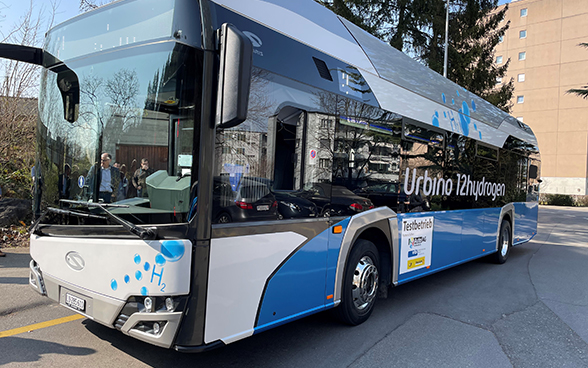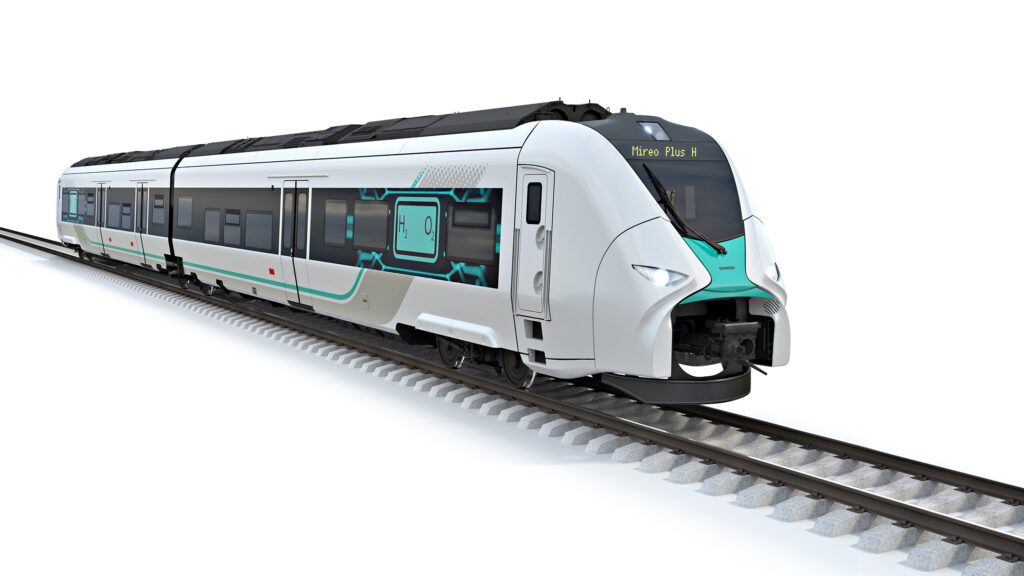The Federal Office of Transport starts the first hydrogen tests for public vehicles
Not only electric mobility, but also hydrogen vehicles are a tool that can contribute to the decarbonisation of traffic. The Federal Office of Transport (FOT) has given the green light to tests with a hydrogen bus and has commissioned studies to take stock of the prospects for this technology in public transport.

Over the last ten years, progress has been made in the field of hydrogen technology, and in the medium term the use of vehicles using this energy source seems to be possible in public transport as well. For this reason, the FOT has recently approved a hydrogen bus, a demonstration vehicle made available to the various public transport companies in Switzerland, which can test it in turn for runs with and without passengers. There are also plans to do the same test with a hydrogen bus of another brand.
As part of the Energy Strategy for Public Transport 2050 program, the FOT has commissioned two studies on the potential of hydrogen in public transport (see links below). The authors analyze the advantages and disadvantages of two types of hydrogen buses, fuel cell buses (FCEB) and internal combustion buses (H2ICEB), compared to diesel and electric buses.
First hydrogen-powered train for Bavaria
On the way to climate-neutral road traffic
Hydrogen suitable for longer journeys
In terms of technical performance, both electric and hydrogen-powered buses can be used for short daily distances, generally for urban journeys. The latter, however, are particularly suitable for longer distances, routes of more than 250 kilometers per day or with significant differences in altitude, for example in the mountains. Hydrogen buses, in fact, have more autonomy than electric ones, which require heavy and larger batteries to have sufficient capacity. Hydrogen technology could therefore serve, in the future, to replace part of the diesel fleet currently used in regional traffic.
The main obstacle to the adoption of hydrogen technologies remains its production, which is still complex, energy-intensive and expensive, even more so if only green hydrogen is used. Even today, a hydrogen FCEB bus costs twice as much as a diesel one and its maintenance requires at least 10-20 percent more expense. According to one of the studies conducted, however, H2ICEB hydrogen buses will be less expensive than electric ones, considering the entire life cycle. In addition, the internal combustion solution frees one from the obligation to buy a new vehicle, since it is possible to keep the existing bus and simply replace or convert its engine from diesel to hydrogen, adding a storage system for the latter.
The possibility of using hydrogen as an alternative to fossil fuels is not limited to buses, so much so that it is also being considered in other areas, such as shipping or rail yards.

Support for hydrogen-powered trucksTogether with other federal agencies, the FOT also supports the use of hydrogen vehicles in the goods transport sector. Like electric vehicles, hydrogen-powered trucks are excluded from the performance-related heavy vehicle fee, even though they also cause external costs. These vehicles use the road network and thus contribute to congestion and environmental impact. According to the new CO2 law, which is being consulted until the beginning of April, the exemption from the fee is to be extended until 2030 in order to ensure that the transport industry can plan its investments in this area with certainty.
|
Hyundai’s hydrogen venture begins in Switzerland

Energy strategy for public transport – SETraP 2050
Public transport can make a significant contribution to saving energy and reducing CO2. The Federal Council has therefore mandated the Federal Office of Transport (FOT) to implement the energy strategy in this area (Energy Strategy for Public Transport, SETraP 2050).
Objectives of the SETraP 2050 program
- Increase in energy efficiency
- Abandonment of nuclear power
- Reduction of CO2 emissions
- Renewable energy production
The programme is aimed at all public transport in Switzerland, whether by rail, urban, regional road, boat or cableway. It is particularly aimed at transport companies, which are required to take measures to improve their energy and greenhouse gas balance.
The FOT is responsible for stimulating the work, both in terms of implementing the measures and defining the framework conditions for the sector. A total of 3 million Swiss francs per year is allocated to the programme by federal decree, most of which is used to promote the implementation of projects and measures by the sector.
Stratégie Energétique 2050 dans les Transports Publics (francese)
Motorisation à l’hydrogène des bus de transport public Rapport final (francese)





